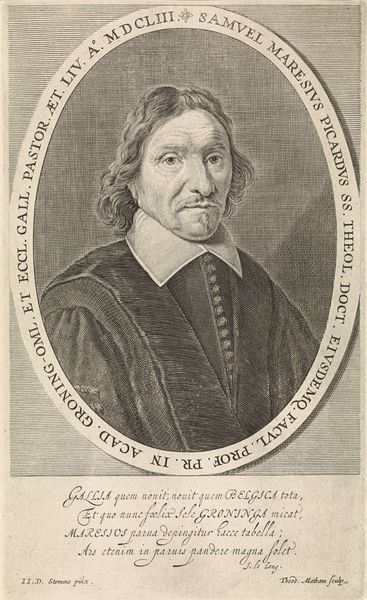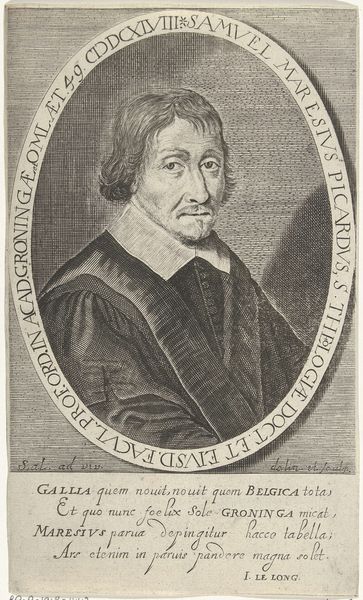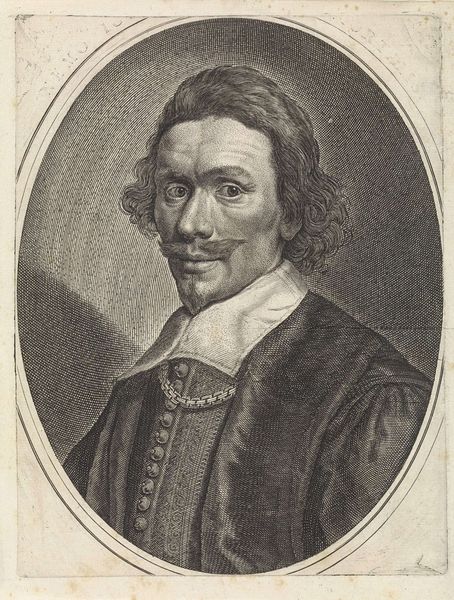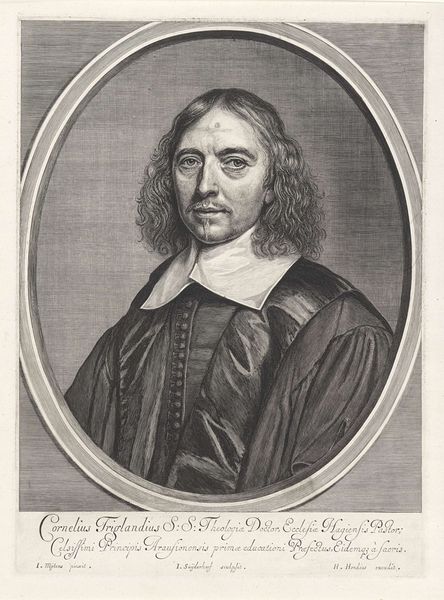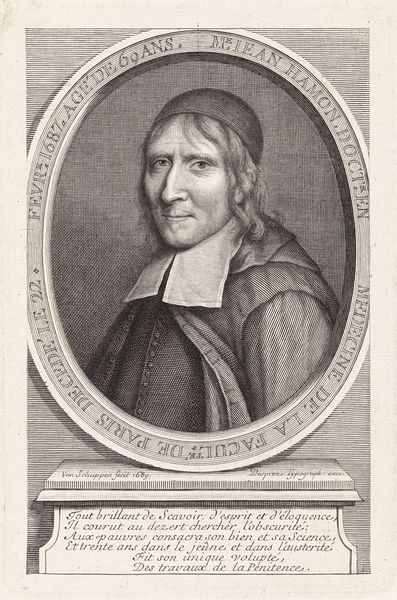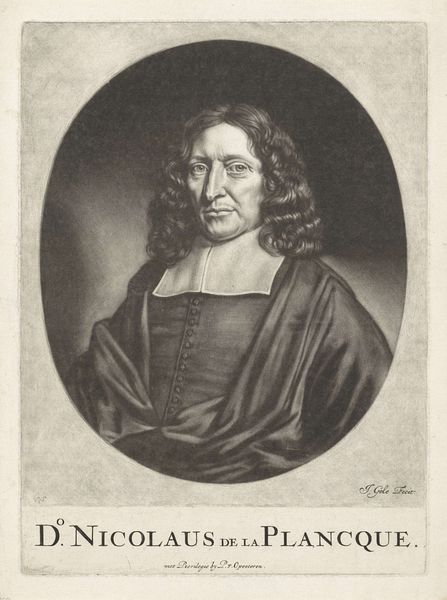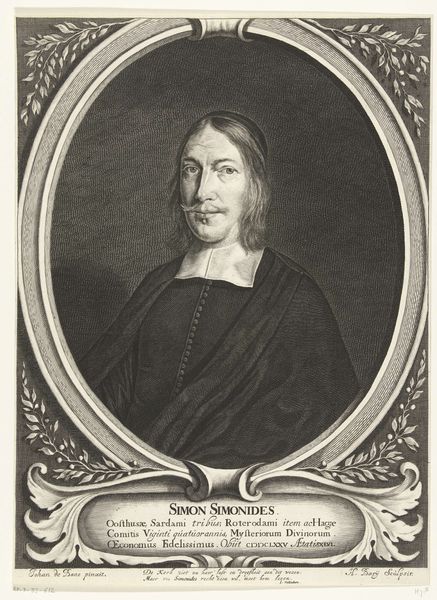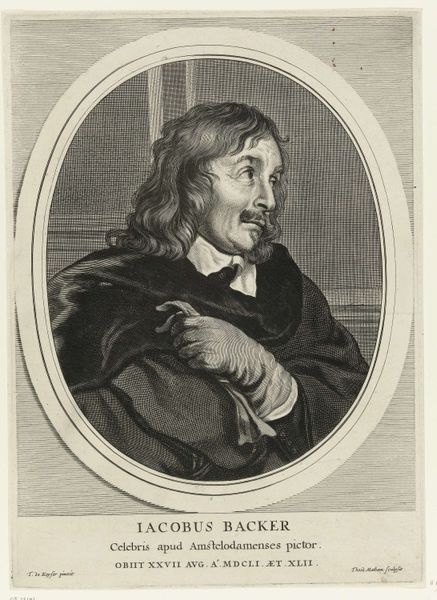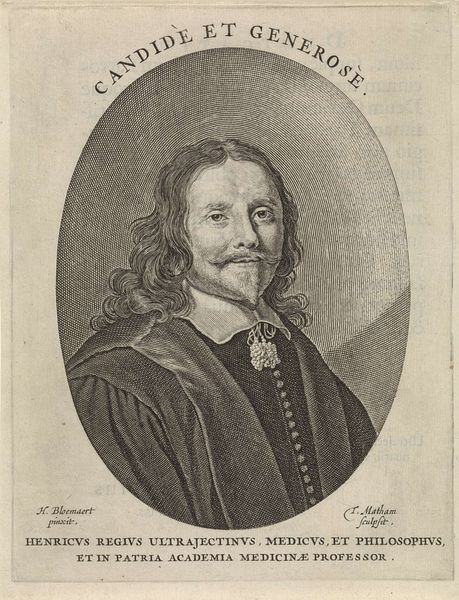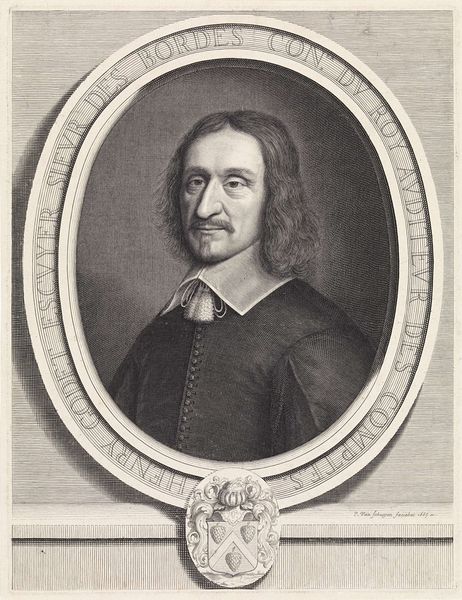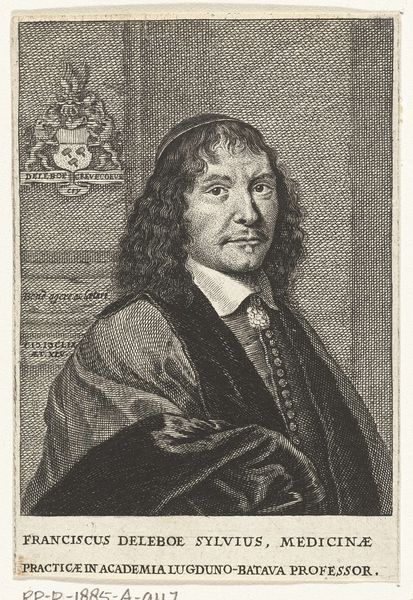
engraving
#
portrait
#
baroque
#
charcoal drawing
#
portrait reference
#
pencil drawing
#
portrait drawing
#
history-painting
#
engraving
Dimensions: height 202 mm, width 130 mm
Copyright: Rijks Museum: Open Domain
Curator: Here we have a portrait, crafted between 1653 and 1676, titled *Portret van Samuel Maresius* by Theodor Matham. The work is an engraving. Editor: My first impression is of controlled intensity. The starkness of the engraving combined with the subject’s gaze… it holds your attention. The oval frame seems to concentrate that energy. Curator: The oval, for me, speaks of established conventions in portraiture of the era, a subtle emphasis on status, perhaps, containing and formalizing the image. Maresius, if you know, was a French-Dutch theologian, a powerful figure whose ideas significantly influenced his time. Editor: And the way the engraving captures light and shadow! See how Matham uses hatching to model the face? It's a study in contrasting tones and textures. Notice how the simple collar acts as a strong visual break, leading the eye to his face. Semiotically, the high collar and dark clothing announce him as a professional and as someone wealthy enough to not need to be exerting himself physically. Curator: Yes, clothing definitely acted as visual codes of distinction then. But look closer. See those rows of buttons? Their number is evocative— perhaps subtly representing his position within an organization, a hierarchy carefully structured. They echo the formality of religious garments from similar eras. The buttons might be viewed as his formal connections or accomplishments. Editor: A compelling point. I still can't escape the materiality here—the clean precision afforded by the engraving technique and how it emphasizes linear forms over softer gradients, which shapes our reading. What emotional response was Matham hoping to elicit? Was it purely about communicating status, or something deeper? Curator: That's the question, isn't it? I see the sternness, of course. Yet there is also a trace of world-weariness in his eyes, maybe a touch of melancholy which resonates with some baroque Vanitas traditions. Editor: It is striking how much character is communicated in the face alone. He meets the viewer on an equal level. A master class in the semiotics of power! Curator: It encourages us to ponder what the markers of status represent. Editor: I find that this close looking has deepened my appreciation for this man's historical importance. It emphasizes a connection to a complex cultural past.
Comments
No comments
Be the first to comment and join the conversation on the ultimate creative platform.
